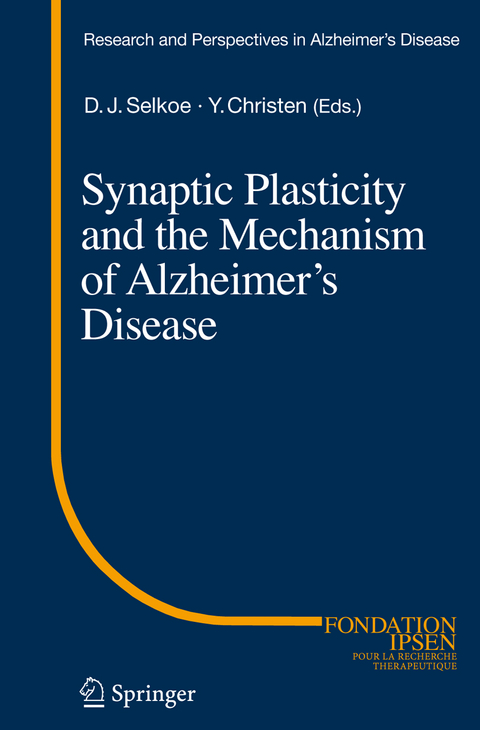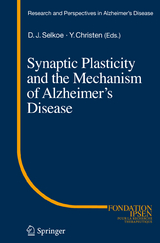Synaptic Plasticity and the Mechanism of Alzheimer's Disease
Springer Berlin (Verlag)
978-3-540-76329-1 (ISBN)
During most of the 20th century, neurodegenerative diseases remained among the most enigmatic disorders of medicine. The scientific study of these conditions was descriptive in nature, detailing the clinical and neuropathological phenotypes associated with various diseases, but etiologies and pathogenic mechanisms remained obscure. Beginning in the 1970s, advances in two principal areas - biochemical pathology and molecular genetics - combined to yield powerful clues to the molecular underpinnings of several previously "idiopathic" brain disorders. Among the classical neurodegenerative diseases, perhaps the most rapid progress occurred in research on Alzheimer's disease (AD). In disorders like Huntington's disease, amyotrophic lateral sclerosis and even Parkinson's disease, unbiased genetic screens, linkage analysis and positional cloning have identified causative genes that subsequently allowed the formulation of specific biochemical hypotheses. In sharp contrast, modern research on AD developed in the opposite order: the identification of the protein subunits of the classical brain lesions guided geneticists to disease-inducing genes, for example, APP, apolipoprotein E and tau. Thus, a biochemical hypothesis of disease - that AD is a progressive cerebral amyloidosis caused by the aggregation of the amyloid b-protein (Ab) - preceded and enabled the discovery of etiologies.
Permanence of the Synapse and Molecular Instability.- Cellular Biology of AMPA Receptor Trafficking and Synaptic Plasticity.- Imaging of Experience-Dependent Structural Plasticity in the Mouse Neocortex in vivo.- Synapse Loss, Synaptic Plasticity and the Postsynaptic Density.- Impact of Beta Amyloid on Excitatory Synaptic Transmission and Plasticity.- Quantitative Neuropathology in Alzheimer's Mouse Models.- Multiple Levels of Synaptic Regulation by NMDA-type Glutamate Receptor in Normal and Disease States.- Soluble Oligomers of the Amyloid ?-Protein: Impair Synaptic Plasticity and Behavior.- Why Alzheimer's is a Disease of Memory: Synaptic Targeting by Pathogenic A? Oligomers (ADDLs).- Synaptic Transmission Dynamically Modulates Interstitial Fluid Amyloid-? Levels.- A?-Induced Toxicity Mediated by Caspase Cleavage of the Amyloid Precursor Protein (APP).- Long-Term Potentiation and A?: Targeting A? Species, Cellular Mechanisms and Putative Receptors.- Genes, Synapses and Autism Spectrum Disorders.
| Erscheint lt. Verlag | 11.1.2008 |
|---|---|
| Reihe/Serie | Research and Perspectives in Alzheimer's Disease |
| Zusatzinfo | XII, 183 p. 34 illus., 26 illus. in color. |
| Verlagsort | Berlin |
| Sprache | englisch |
| Maße | 155 x 235 mm |
| Gewicht | 419 g |
| Themenwelt | Studium ► 1. Studienabschnitt (Vorklinik) ► Physiologie |
| Naturwissenschaften ► Biologie ► Humanbiologie | |
| Schlagworte | ADDL • Alzheimer • Alzheimer's disease • Amyloid precursor protein • Attention Deficit Disorder (ADD) • Autism • Autism spectrum disorder • autism spectrum disorders • beta amyloid • brain • Cortex • glutamate receptor • Memory • mouse neocortex • Parkinson • postsynaptic density • receptor • receptor trafficking • synapse loss |
| ISBN-10 | 3-540-76329-5 / 3540763295 |
| ISBN-13 | 978-3-540-76329-1 / 9783540763291 |
| Zustand | Neuware |
| Informationen gemäß Produktsicherheitsverordnung (GPSR) | |
| Haben Sie eine Frage zum Produkt? |
aus dem Bereich




